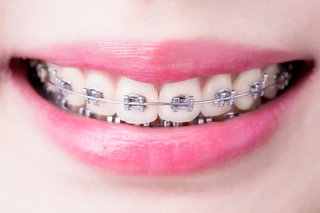Your Overview to Cumming Invisalign: Straightening Teeth with Style and Convenience
Your Overview to Cumming Invisalign: Straightening Teeth with Style and Convenience
Blog Article
Comprehensive Overview to Orthodontics Treatments for Dealing With Oral Misalignments
Recognizing the details of each treatment, including their systems, benefits, and possible downsides, is vital in making notified decisions about one's orthodontic therapy. As we navigate through the thorough overview to orthodontic procedures for dealing with oral misalignments, the intricate information of each technique will unravel, dropping light on the path towards a practical and harmonious dental alignment.
Orthodontic Procedures Summary

Regular changes and tracking are crucial parts of orthodontic therapy to make sure development is on track and to make any kind of essential alterations along the means. By undertaking orthodontic treatments, individuals can not only accomplish a straighter smile but also improve their total dental wellness and feature.
Standard Braces: How They Work
When taking into consideration orthodontic treatments for oral misalignments, traditional dental braces stick out as a time-tested method for remedying teeth positioning. Typical dental braces contain brackets, cables, and bands that work with each other to apply continual pressure on the teeth, gradually relocating them into the wanted alignment. The braces are connected to the teeth making use of an unique adhesive, and the wires are threaded via the brackets. By readjusting the tension of the cords, orthodontists can manage the direction and pressure applied to each tooth, guiding them into correct placement with time.
As stress is applied to the teeth with the braces, the bone surrounding the teeth is improved to sustain the brand-new tooth settings. Clients will need regular changes at the orthodontist's workplace to make sure the braces continue to apply the proper stress for efficient teeth motion.
Unnoticeable Aligners: Cons and pros
Invisible aligners supply a very discreet and hassle-free alternative to traditional braces for dealing with oral misalignments. These clear, customized trays are essentially unnoticeable when worn, making them an enticing choice for individuals looking for a much more visually pleasing orthodontic treatment. Among the main benefits of undetectable aligners is their removability, enabling for easier upkeep of dental hygiene contrasted to conventional dental braces. Individuals can remove the aligners prior to eating or brushing their teeth, lowering the threat of food getting embeded the appliance and streamlining the cleaning procedure.

Surgical Orthodontic Options
Surgical interventions in orthodontics present feasible alternatives for resolving intricate oral imbalances that may not be effectively dealt with with traditional orthodontic therapies. While traditional dental braces and unseen aligners can correct numerous orthodontic problems, specific cases need surgical treatment to attain optimal outcomes. Surgical orthodontic options are typically suggested for serious malocclusions, significant jaw disparities, and situations where the underlying bone structure requires modification to attain appropriate positioning.
One common medical orthodontic procedure is orthognathic surgical procedure, which includes repositioning the jaws to deal with practical concerns such as trouble chewing or speaking. This surgery is frequently performed in cooperation with an orthodontist that assists line up the teeth before and after the procedure. Surgical orthodontics might likewise involve procedures to subject affected teeth, remove excess gum cells, or improve the jawbone to create a more unified face profile.
Before considering medical orthodontic alternatives, patients go through a comprehensive examination to identify the necessity and possible advantages of such treatments. cumming aligners. While surgical treatment might appear challenging, it can dramatically boost both the function and aesthetics of the smile in cases where standard orthodontic treatments fail
Retainers and Post-Treatment Treatment

Post-treatment treatment entails complying with the orthodontist's directions faithfully. This might include correct dental health practices, going to follow-up consultations, and using the retainers as recommended. Failure to abide by post-treatment care directions can cause regression, where the teeth progressively move back towards their original settings. Regular retainer wear, excellent click site oral health, and routine dental check-ups are necessary for keeping the outcomes accomplished via orthodontic surgical procedure and guaranteeing the lasting stability of the corrected dental positioning.
Conclusion
In conclusion, orthodontic treatments provide different options for dealing with dental misalignments. Surgical orthodontic options are available for a lot more extreme imbalances. Generally, orthodontic procedures can properly improve dental wellness and aesthetic look.
As we browse through the detailed guide to orthodontic treatments for dealing with oral misalignments, the intricate details of each technique will unfold, losing light on the course towards a unified and practical oral placement. - aligners
One of the most usual orthodontic treatments is the use of braces, which consist of metal braces and cables that use gentle pressure to progressively shift teeth into the wanted setting.When thinking about orthodontic treatments for oral imbalances, conventional braces stand out as a reliable technique for fixing teeth placing. In addition, unseen aligners might not be ideal for intricate orthodontic concerns that need more considerable teeth motion, as they are usually advised for moderate to moderate situations. Retainers are tailor-made orthodontic devices designed to hold teeth in their remedied placements after the completion of orthodontic therapy.
Report this page